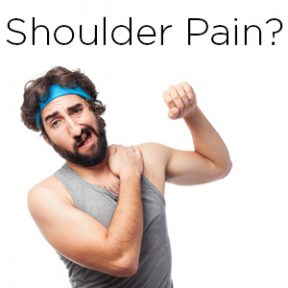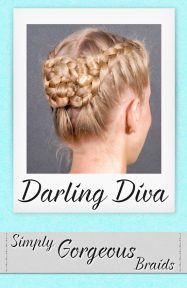 Congratulations to students who just finished fall semester finals!
I’m not sure why schools don’t just give finals before the winter holidays because preparing for finals after coming back from a 2-week break is both stressful and daunting. Most semester breaks are only a few days off so make the most of them!
Refuel but stay on the same schedule!
This might sound counterintuitive but hear me out. When you head back to school in a few days, you want to hit the new semester running. So you don’t want to be exhausted as your body has to readjust – again – to getting up early for school.
Over the next 3 or 4 days, get up at the same time you do while school is in session, and go to bed at a reasonable time so you get your 8 or 9 hours of sleep each night. If you need to catch up on sleep, go to bed earlier and maybe sleep in for an hour at the most. That way, when school starts up, you’ll be ready and refueled!
Congratulations to students who just finished fall semester finals!
I’m not sure why schools don’t just give finals before the winter holidays because preparing for finals after coming back from a 2-week break is both stressful and daunting. Most semester breaks are only a few days off so make the most of them!
Refuel but stay on the same schedule!
This might sound counterintuitive but hear me out. When you head back to school in a few days, you want to hit the new semester running. So you don’t want to be exhausted as your body has to readjust – again – to getting up early for school.
Over the next 3 or 4 days, get up at the same time you do while school is in session, and go to bed at a reasonable time so you get your 8 or 9 hours of sleep each night. If you need to catch up on sleep, go to bed earlier and maybe sleep in for an hour at the most. That way, when school starts up, you’ll be ready and refueled!
 Congratulations to students who just finished fall semester finals!
I’m not sure why schools don’t just give finals before the winter holidays because preparing for finals after coming back from a 2-week break is both stressful and daunting. Most semester breaks are only a few days off so make the most of them!
Refuel but stay on the same schedule!
This might sound counterintuitive but hear me out. When you head back to school in a few days, you want to hit the new semester running. So you don’t want to be exhausted as your body has to readjust – again – to getting up early for school.
Over the next 3 or 4 days, get up at the same time you do while school is in session, and go to bed at a reasonable time so you get your 8 or 9 hours of sleep each night. If you need to catch up on sleep, go to bed earlier and maybe sleep in for an hour at the most. That way, when school starts up, you’ll be ready and refueled!
Congratulations to students who just finished fall semester finals!
I’m not sure why schools don’t just give finals before the winter holidays because preparing for finals after coming back from a 2-week break is both stressful and daunting. Most semester breaks are only a few days off so make the most of them!
Refuel but stay on the same schedule!
This might sound counterintuitive but hear me out. When you head back to school in a few days, you want to hit the new semester running. So you don’t want to be exhausted as your body has to readjust – again – to getting up early for school.
Over the next 3 or 4 days, get up at the same time you do while school is in session, and go to bed at a reasonable time so you get your 8 or 9 hours of sleep each night. If you need to catch up on sleep, go to bed earlier and maybe sleep in for an hour at the most. That way, when school starts up, you’ll be ready and refueled!
 Ever notice the incredible price hikes for food, toiletries, and gifts at airports? With a little planning ahead, you could avoid wasting hundreds of dollars on things you have sitting in your medicine cabinet or dresser drawers.
Ever notice the incredible price hikes for food, toiletries, and gifts at airports? With a little planning ahead, you could avoid wasting hundreds of dollars on things you have sitting in your medicine cabinet or dresser drawers.
Here are 3 tips that are easy to do and can save you lots of money.
Tip One Create a general itinerary of events and things you plan to do. This can include business meetings, big adventures at amusement parks, or parties and reunions. Consider the time of your departure and pack a lunch or dinner to really save on meals before you leave your home town! Even though you know what you’re planning to do in your head, just writing it down is the first step in making sure you’re covered for your trip. Tip Two Create the following lists of things you’ll need for each of these events:- What to wear
- What to bring, and
- What to do before you leave for the trip.
This is where you save big bucks by not having to buy jewelry or a fancy clothes for that reunion/soiree/murder mystery party or exercise clothes that are sitting in the dryer.
Remember to include chargers for your phones and computers, printed boarding passes, and oh yeah, your passport and/or visa! This will also remind you to purchase train tickets before you arrive in a foreign country — yup, it’s much easier to take care of this kind of thing ahead of time IN ENGLISH, rather than in another language at the ticket counter when you’re already running late!
Tip Three Open your suitcase and carry-on bag and place it in your bedroom. Start packing a week ahead of time and throw things in from your lists above. You’ll be surprised how you’ll be reminded of daily things like meds, dental gear, and toiletries just because you’ll see that open suitcase. You might even begin to over pack during the week, but it’s much easier to have MORE and discard than it is to not have enough and be forced to buy things at your destination. Bonus Tip I have a checklist that I give to my family that they keep in their suitcases. This way, when they open up their suitcases to pack, whether it’s an hour before flight time or a week ahead of time, they can check off what they’ve packed and they’ll have the heads up they need for just about everything else. I’ve added tasks like pet sitter, sports equipment lists, baby supplies, photography equipment, and a detailed toiletry list. With these tips, you won’t spend a dime on overpriced goods at the airport or at your destination. That gives you more money to buy fun things, and less stress so you can enjoy yourself even more! All of the recent requirement changes for the UC’s can be confusing.
To help you figure it all out, I’ve laid out exactly what’s needed for freshmen and transfer applicants below.
YES:
1. Freshmen must send SAT, ACT, and/or TOEFL scores to one UC
2. All students must mail UCs about any changes (senior classes, grades below C, or changing schools)
3. Transfer students need to log in to their applications and update fall term grades and planned spring courses by Jan 31st on the Transfer Application Update
4. All students seeking financial aid or scholarships should complete the FAFSA before March 2nd
NO:
1. Neither freshmen nor transfer students need to send fall transcripts now unless specifically asked to do so
2. Don’t call the admissions offices to inquire about your application status
3. Don’t send resumes, portfolios, DVDs, or any items to the admissions office
The waiting game can be stressful for students and parents. Check your email inbox frequently to see if anything is missing from your application packages, and send whatever they request ASAP.
Good luck!
All of the recent requirement changes for the UC’s can be confusing.
To help you figure it all out, I’ve laid out exactly what’s needed for freshmen and transfer applicants below.
YES:
1. Freshmen must send SAT, ACT, and/or TOEFL scores to one UC
2. All students must mail UCs about any changes (senior classes, grades below C, or changing schools)
3. Transfer students need to log in to their applications and update fall term grades and planned spring courses by Jan 31st on the Transfer Application Update
4. All students seeking financial aid or scholarships should complete the FAFSA before March 2nd
NO:
1. Neither freshmen nor transfer students need to send fall transcripts now unless specifically asked to do so
2. Don’t call the admissions offices to inquire about your application status
3. Don’t send resumes, portfolios, DVDs, or any items to the admissions office
The waiting game can be stressful for students and parents. Check your email inbox frequently to see if anything is missing from your application packages, and send whatever they request ASAP.
Good luck!
 Guest Blogger Mary Flodin on Pesticide Exposure in the Schools
Guest Blogger Mary Flodin on Pesticide Exposure in the Schools
Autism spectrum disorders, ADHD, and other neurobehavioral challenges are on the rise. As a teacher in Central California public schools over the past thirty years, I’ve witnessed an alarming increase in learning and social/emotional disabilities. This epidemic of learning and behavioral challenges is not limited to any one socio-economic or cultural class. Affluent and well-educated parents with access to excellent pre-natal care are being hit as hard as the poor.
What’s going on? There are many theories: vaccinations, GMO’s and other modifications to our food, exposure to electronic devices and to a wide variety of environmental pollutants . . . As is the case with most of our contemporary maladies, it’s difficult to identify any single “smoking gun” responsible for causing this widespread outbreak of neurological harm. However in California, one factor that researchers have now linked to the rise in childhood neurological disorders is pesticides.
Two studies – the CHAMACOS Study by UC Berkeley researchers and the MIND Institute study out of UC Davis – support a connection between pesticide exposure and neurobehavioral damage to the young. More on these studies can be found in the California Health Report article Dangerous Drift by Lily Dayton.
I first became aware of the problem of pesticide drift into the schools in the 1980’s, when I was teaching in a Watsonville elementary school surrounded by strawberry fields. At that time, my colleagues and I were passionately focused on providing our students with an excellent learning experience. We paid little attention to what was going on in the strawberry fields on the other side of the chain link fence. But when we realized that the incidence of cancer, asthma, developmental delays, and behavioral disorders at our school was abnormally high, we started asking questions. It soon became obvious that the pesticides being used on the other side of the fence were making people sick.
When we obtained copies of the pesticide use permits for the strawberry fields surrounding our school, we discovered that a whole suite of deadly poisons, many of them developed for chemical warfare, were drifting into our classrooms. At that point, I joined with other teachers, parents, and community members to found Farm Without Harm. The organization’s mission was to educate people about the dangers of pesticide exposure, to transform public policy, and to help facilitate the transition to sustainable agricultural practices.
Unfortunately, over the past decade, use of soil fumigants overall has actually increased 20 percent. Today, Californians living in agricultural regions have a 69 times higher risk of poisoning from pesticide drift than residents of other regions.
Although the pesticide of greatest concern in the 1990’s, Methyl Bromide, is finally beginning to be phased out, Chlorpyrifos (one of the Organophosphate class of pesticides that was the subject of the CHAMACOS study), Glyphosate (Round Up), Chloropicrin (tear gas), and the carcinogenic 1,3-D/Telone – all pesticides of great concern – are in widespread use today in Central California. There are currently no standardized state-wide regulations about how close to schools, hospitals, shopping centers, and residential areas these acutely toxic chemicals, prone to drift, can be used.
Over the past year, the Safe Strawberry Working Group, a Monterey Bay area subcommittee of Californians for Pesticide Reform and Pesticide Action Network, has been meeting with the county agricultural commissioners, boards of supervisors, and state officials to promote new state policies restricting pesticide use near schools, including no-spray “buffer zones”. We’ve also supported the proposed ban on brain-harming, lung-damaging Chlorpyrifos and restrictions on the use of the carcinogenic endocrine disruptor Glyphosate (Roundup).
The Monterey Bay community continues to be at the forefront of pesticide reform activism in California, as it has been for half a century. Last year in the Monterey Bay area, thousands signed petitions and letters to pesticide regulators; hundreds attended public events, meetings, and actions; dozens spoke at news conferences and public meetings; dozens more wrote to or were quoted in news media; and yet more dozens met with local and state officials. We are now on the brink of a truly hopeful moment with never-before opportunities to reduce the threats of hazardous pesticides. This year, we’ll need to do even more.
Please join us in planning and carrying out this year’s campaigns to improve the health of our children and our community through reducing the threats of hazardous pesticides. If this issue is of concern to you and you’d like to make a difference, you are invited to attend either or both of the following monthly meetings:
Safe Strawberry Monterey Bay Working Group—Salinas Branch read more
 This idea started when I realized I had a drawer full of old t-shirts that I just couldn’t throw out. This may sound like the beginnings of a hoarder’s nightmare but each of these t-shirts brought back nostalgic memories.
When Nicole discovered that I had this giant drawer filled with t-shirts I couldn’t throw out, she gave me a bag of her t-shirts, too. Hmm, runs in the family.
I thought about cutting out square patches from each t-shirt and making a quilt, but my walls are filled with quilts from Merit Academy’s classes. So instead, I created t-shirt art all of Nicole’s favorite t-shirts and framed it. Her collection includes t-shirts from her Dollie days at Stanford as well as Jam Pac’d, Decadance, the Band and other college memories. It also has Merit Academy, No Limits, and Dancenter, and her travels to the rainforest in Costa Rica and the Galapagos Islands. She even had t-shirts from her first modeling gig with Jeff Sumida.
How do you make t-shirt art?
Let me tell you, it was really easy, and fun to do!
I bought an inexpensive framed chalkboard at Target, cut out the logos and artwork on the t-shirts, heated up my glue gun, and rolled quilt batting to add dimension.
Before I glued each piece to the chalkboard, Nicole and I arranged and rearranged each piece. That was my favorite part! She told me stories behind each t-shirt that I hadn’t heard before.
She’s taking her t-shirt art home and hanging it on her living room wall. I’m sure it’ll be a great conversation starter!
This idea started when I realized I had a drawer full of old t-shirts that I just couldn’t throw out. This may sound like the beginnings of a hoarder’s nightmare but each of these t-shirts brought back nostalgic memories.
When Nicole discovered that I had this giant drawer filled with t-shirts I couldn’t throw out, she gave me a bag of her t-shirts, too. Hmm, runs in the family.
I thought about cutting out square patches from each t-shirt and making a quilt, but my walls are filled with quilts from Merit Academy’s classes. So instead, I created t-shirt art all of Nicole’s favorite t-shirts and framed it. Her collection includes t-shirts from her Dollie days at Stanford as well as Jam Pac’d, Decadance, the Band and other college memories. It also has Merit Academy, No Limits, and Dancenter, and her travels to the rainforest in Costa Rica and the Galapagos Islands. She even had t-shirts from her first modeling gig with Jeff Sumida.
How do you make t-shirt art?
Let me tell you, it was really easy, and fun to do!
I bought an inexpensive framed chalkboard at Target, cut out the logos and artwork on the t-shirts, heated up my glue gun, and rolled quilt batting to add dimension.
Before I glued each piece to the chalkboard, Nicole and I arranged and rearranged each piece. That was my favorite part! She told me stories behind each t-shirt that I hadn’t heard before.
She’s taking her t-shirt art home and hanging it on her living room wall. I’m sure it’ll be a great conversation starter!
 Here are 3 easy steps to organize and plot out steps to reaching your goals!
Here are 3 easy steps to organize and plot out steps to reaching your goals!
New Year’s Resolution? Yah right. For most people, it’s a pipe dream. But New Year’s Resolutions usually don’t happen because everyone set lofty goals WITHOUT A PLAN! So here are 3 easy steps to make your New Year’s Resolutions part of your life. Not just temporarily, but until you actually reach your goals!
Step One: Write it down
My good friend Tim Niemier once told me that you need to write down your goals in order to make them come true. At first, I thought he was a little wacky, but then again, he had a goal to make sit-on-top kayaks and sold Ocean Kayak for a small fortune! Hmmm. But I’m actually advocating that you write down your goal in your planner. In other words, pick the date you would like to actualize your dream or goal and write it down on that date. That’s right, just write it down.
Step Two: Block off time to do each phase
After you write down your goal on an actual date, then make a list of all of the steps you need to take to reach that goal. For instance, if you want to build a greenhouse, then make a list of the general steps you need to take to complete it. The list might look something like this: (1) design greenhouse; (2) layout measurements; (3) organize materials list; (4) create a budget; (5) order materials; (6) lay foundation; (7) build framework; (8) add windows and glass; (9) install doors; and (10) install shelves. Then WRITE DOWN WHEN YOU WILL DO EACH OF THESE PHASES. Take into consideration your job, family, and other commitments but block off time to get it done.
Step Three: Reward yourself along the way
As you complete each phase, highlight it in your planner. That’ll give you a feeling of accomplishment. If you miss one step, then move it to another time that works for you. Don’t beat yourself up about it. Life happens and you need to be flexible. As you consider your tasks for each day, you may need to say no to other activities in order to stick to your goal. That’s why it’s nice to have it written down in your planner.
So get the new planner for next year and get started now! It’s simple. Just WRITE IT DOWN. Write your goal and each step in your planner; you’ll be surprised by how easy it is to reach it by your deadline! Let me know how this works for you!
 I’m not sure why so many schools have final exams after the holidays.
I’m not sure why so many schools have final exams after the holidays.
When kids have 2 weeks off from school, trust me, they don’t spend their precious vacation time studying for final exams. Instead, they lose steam, forget what they’ve already learned, and get set back at least a month. So when they head back to school after the holidays, they’re dazed and they’re overwhelmed because final exams are just around the corner.
Short of pumping your kids full of caffeine – just kidding! mostly! – here are 3 tips that can help them maximize their time to get the highest scores possible on their final exams.
Step 1: Make a plan
First, ask them to meet with each teacher to ensure that all course work has been turned in and check to see if any extra credit assignments are possible. Second, they should find out what concepts the finals will cover and what types of questions to expect (essays, multiple choice, short answers). Third, they need to make a list of all concepts that will be covered for each final, even if they think they understand them.
Step 2: Block off time to do each task
Using their Merit Planner (or a paper planner that is equally divided by 7 days per week with time increments that start at 6:00 am and go until midnight), ask them to block off time to review and learn concepts following the list they just created. First, they’ll need to enter their classes and scheduled appointments and practices/games that are mandatory to attend. Then they can fill in short blocks of time to complete each study task around their mandatory classes and appointments. If time permits, ask them to block off time to review other sources like Khan Academy, Wikipedia, and SparkNotes. By reading other textbooks or source materials, they’ll gain a stronger foundation and understanding of the material.
Step 3: Postpone social activities until after finals
If you ask your kid to postpone all social activities until after their finals, they’ll think you went off the deep end. But, if they actually make a plan and block off time to complete each task just as I’ve suggested above, they’ll quickly see why they won’t have time to hang out with friends or play computer games while they prep for their finals. When they really understand what it takes to be prepared for final exams, they’ll make smart choices because they really do want to do well. But, they’ll only understand what time commitment they need if they plan ahead. Kapich?
It’s important to get started NOW. So many kids think they can review notes and homework assignments for a few hours the night before the exam and still get a good grade. Even when they are disappointed with their grades on their finals, they often don’t understand what they should have done to be better prepared. That’s why they need to make a plan, block off time to get it done, and postpone their social lives until after finals.
Good luck!
 Today’s post is by Jonathan Williams, an Exercise and Fitness Specialist from San Jose State University with a B.S. in Kinesiology. He is also the co-founder and president of Silicon Valley Applied Biomechanics (SVAB), a non-profit organization.
Today’s post is by Jonathan Williams, an Exercise and Fitness Specialist from San Jose State University with a B.S. in Kinesiology. He is also the co-founder and president of Silicon Valley Applied Biomechanics (SVAB), a non-profit organization.
Many people experience neck, shoulder, and arm pain caused by many different situations. But did you know that these symptoms are often produced by movements we do every day? While traumatic injury is a cause of pain in these common areas, it can also be related to simple everyday movements we do all the time without thinking.
The cervical spine (c1-c7) is where the brachial (related to arm) plexus (bundle or network) originates. At the shoulder and neck area, a common daily movement is lateral bending where the ear and should come together and get farther apart. This movement causes compression or stretching of the nerve bundle that travels through that area. While extreme compression or stretch of these nerves is more often caused by a sports injury or car accident, it can also be caused smaller repetitive movements causing more chronic symptoms. A common complaint related to brachial plexus irritation is a nagging pain at the shoulder, and a tingling sensation at the pinky or palm. Often these symptoms are reported as being the strongest in the morning or during work situations where posture may be challenged (desk work or holding objects). If the pain lasts more than a few weeks, or even months, it is most likely caused by something you are doing every day. I have had numerous clients who have reported discomfort in the neck and shoulder area which have turned out to have some very unusual causes. One client was having trouble in the morning with a “frozen” shoulder and was struggling with putting a shirt on in the morning. After asking a number of questions, I asked about her purse and how much was in it. The purse contained a number of items, and weighed more than 10 lbs. This may not sound like a lot, but if you think about carrying 10 pounds on the same shoulder for hours a day, it starts to add up. With the shoulder hiking done on a daily basis, the nerve was constantly being irritated to the point where it was causing serious problems. The suggestion made was to use (at least temporarily) a back pack with two well-cushioned straps, along with a series of back and posture exercises to help rehabilitate the affected area. Another client was having similar problems caused by something else entirely. This individual was in the last few semesters of his college career, and decided to take up fitness to balance out all the desk work he would be doing. The irritated shoulder, tingling in the wrist / palm indicated that the brachial plexus might be irritated. After checking for postural deviations, I noticed forward-rounded shoulders, which are common amongst people who sit for long periods of time. This can cause compression on the anterior side of the shoulder where the nerve bundle goes through. Again, a series of upper back and postural exercises were prescribed to help counteract the postural distress caused by his career choice. My last example is someone who owns and operates a day care facility. She was experiencing difficulties when trying to lift anything overhead, and a throbbing sensation in the shoulder during the morning or before bed. It turns out she had been using her dominant arm to hold children for hours at a time without really thinking about it. Here again, a shrugging of the shoulder was causing compression and irritation to the nerve bundle traveling through this area. After going over this, we suggested letting some of the helpers hold the kids more often, at least for a short while, to help rehabilitate the muscle group. This combined with a series of exercises have caused the symptoms to subside. What should I do if I am experiencing similar problems? The first thing you will want to do is identify what may be causing the problem. While you may need to see a specialist for symptoms caused by traumatic injuries, you can start to narrow it down by thinking about what you do often with your neck and shoulders. Do you have a desk job, or sit for long durations? How is your posture during this time? Do you carry a purse or briefcase on one side? Do you hold objects on one side for long durations? We are looking for things that require your shoulder to elevate and in turn compress the nerve plexus. If you do find that you may be having these issues, give your body a break from what may be causing the irritation. This may not always be possible with work situations, but you may be able to modify your work station, how you carry your bag, or how you hold objects to help reduce the stimulus. Icing and anti-inflammatories may be temporarily useful, but would not be considered a solution to the problem itself. After a period of rest and recovery, you can begin to use rehabilitative exercises to strengthen the affected area. Upper back and postural exercises are often prescribed by physical therapists to combat brachial plexus issues, but why wait until it gets that bad? Even if your symptoms are not that bad yet, you can always think about PRE-habilitating yourself. References Frederic H. Martini, Michael J. Timmons, Robert B. Tallitsch. Human Anatomy-5th Ed. Prentice, William E. Principles of Athletic Training: a Competency-Based Approach – 14th Ed. Chad Starkey, Sara D. Brown, Jeff Ryan. Examination of Orthopedic and Athletic Injuries – 3rd Ed. I’m getting ready to host a Star Wars Marathon, and my new rendition of Yoda is helping to set the mood.
I’m getting ready to host a Star Wars Marathon, and my new rendition of Yoda is helping to set the mood.
Sadly, the Force is not with Rice Krispies Treat Yoda, so I put a chopstick across his head to help keep his ears up.
With a little green food coloring, Rice Krispies, marshmallows and margarine, you can sculpt just about anything!
It’s that time of year when we celebrate the end of 2015 and look forward to a prosperous and happy 2016.
If you’re looking to change up your look without spending a fortune, try one of these updos!












